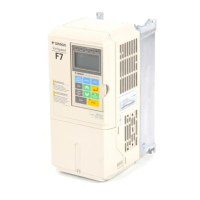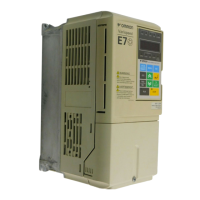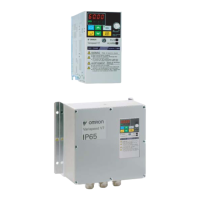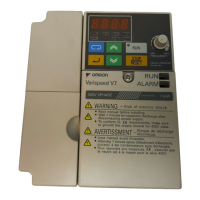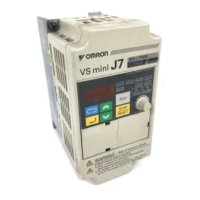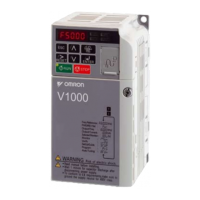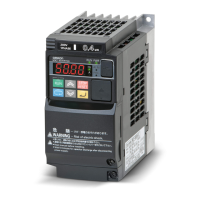4-9
4
Precautions for Induction Motor Autotuning
If the Motor Rated Voltage is Higher than the Power Supply Voltage
If the motor rated voltage is higher than the power supply voltage, lower the base voltage value like shown in
Fig 4.5 to prevent saturation of the Inverter’s output voltage. Use the following procedure to perform autotun-
ing:
1. Input the voltage of the input power supply to T1-03 (Motor rated voltage).
2. Input the results of the following formula to T1-05 (Motor base frequency):
3. Perform autotuning.
After the completion of autotuning, set E1-04 (Max. output frequency) to the base frequency from the motor’s
nameplate.
Fig 4.5 Motor Base Frequency and Inverter Input Voltage Setting
If speed precision is required at high speeds (i.e., 90% of the rated speed or higher), set T1-03 (Motor rated
voltage) to the input power supply voltage × 0.9. In this case at high speeds the output current will increase as
the input power supply voltage is reduced. Be sure to provide sufficient margin in the Inverter current.
If the Maximum Frequency is Higher than the Motor Base Frequency
Set the maximum output frequency in parameter E1-04 after autotuning has been performed.
T1-05 Base frequency from motor nameplate
T1-03
Motor rated voltage
-----------------------------------------------
×=
0
Output frequency
Base frequency
from motor name
plate
T1-03
Rated voltage
from motor
name plate
Output voltage
Base frequency from
motor name plate
x T1-03
Rated voltage from motor
name plate
